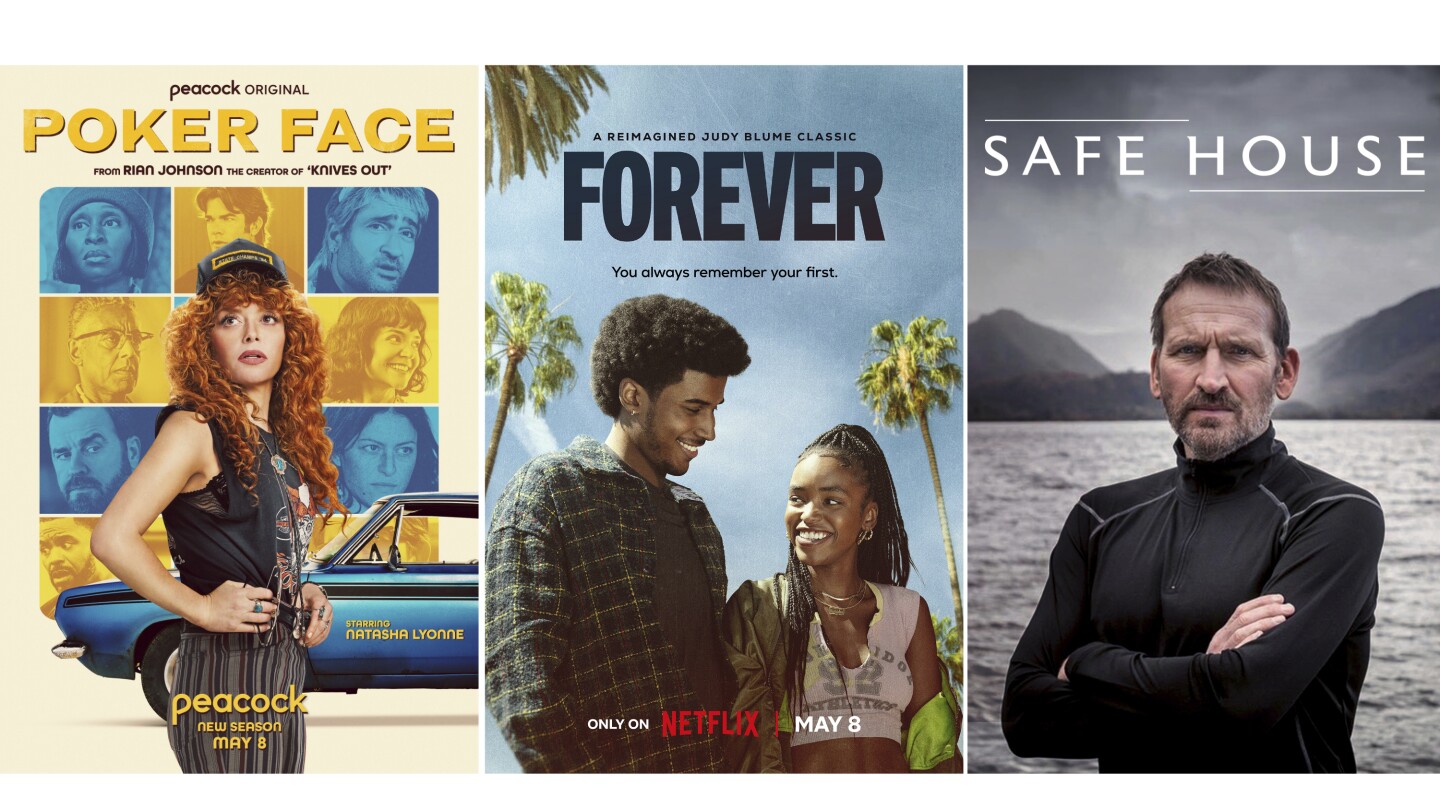Lifestyle
Not debate, ‘Ethics Bowl’ helps show students a new world of discourse

CHAPEL HILL, N.C. (AP) — A contrast:
At the National Speech and Debate Tournament, two high school students take the stage. The first articulates the position he has been assigned to defend — people should have a right to secede from their government — and why it is correct. Another student, assigned the opposite position, begins to systematically tear down her opponent’s views.
A year later and 800 miles away, two teams of high school students convene at the University of North Carolina for the National High School Ethics Bowl finals. A moderator asks about the boundaries of discourse — when a public figure dies, how do you weigh the value and harm of critical commentary about their life?
Teams have not been assigned positions. One presents their ideas. The opposing team asks questions that help everyone to think about the issue more deeply. No one attacks.
Many a young debater may learn the rhetorical skills to become a successful lawyer or politician, subduing an opponent through wit and wordplay. But are they learning skills that will make them better citizens of an increasingly complex and contentious republic?
In an age when many Americans are wondering whether it is still possible to have a principled, respectful disagreement over important issues, proponents of Ethics Bowl say it points the way.
Discussion replaces contentiousness
Ethics Bowl may resemble debate. After all, it’s two teams discussing a controversial or difficult topic. But they are very different.
In Ethics Bowl, teams aren’t assigned a specific position on an issue that they have to defend regardless of their beliefs. Instead, members are given cases to discuss and make their own decisions about what they consider the best position. Teams can, and often do, come to similar conclusions. It is — and this is important — OK for them to agree. Scoring is based on how deeply they explore the issues, including other viewpoints.
Robert Ladenson, who developed the Ethics Bowl as a college philosophy classroom exercise back in 1993 and went on to lead the Intercollegiate Ethics Bowl for decades, explains what he considers an ethical understanding of an issue in an oral history for the University of Illinois in 2023.
It means “having some capacity to view, from the inside, the ethical outlooks of people who disagree with you. That means not simply being aware of what they’ve said or what they’ve written, or being able to develop a nifty debaters’ responses to the viewpoints they hold — but really looking inside the other view and trying to understand it from the other person’s way of looking at the world.”
It’s a reach for understanding and common ground
That plays out at Ethics Bowl. Take the case “See Spot Clone,” about whether it is ever ethical to clone a beloved pet.
Harpeth Hall from Nashville starts the discussion with six minutes to present their thoughts. There are millions of homeless pets, so the ethical choice is to adopt, they believe. Cloning is self-serving for the human. The pet cannot consent to being cloned. Also, cloning may involve unknown health issues for the cloned pet, as in the renowned case of Dolly the sheep. The team also believes that death is a part of life, and it is important for people to confront death.
Now it is the turn of team B, Miami’s Archimedean Upper Conservatory — not to attack and refute, but to ask questions that expand the discussion. What about pet breeders? Where do they fit on the ethical continuum? Also, what’s so wrong with cloning a pet for your own happiness? Are all selfish pursuits bad?
Team A responds that breeding is better than cloning but worse than adopting a stray. They point out that a cloned pet will not have the same personality, and that could bring the owner pain instead of comfort.
Next the judges ask questions. What if there were no possible health problems for the cloned animal? What if the animal is not cloned to comfort an owner but for a more noble purpose? Would it be ethical to clone a skilled search-and-rescue dog?
Cloning is still a threat to the “natural cycle of life,” Team A contends. And there is no guarantee that the temperament and personality that make an excellent service animal would be retained in a clone.
Once the round is complete, the moderator introduces a new case.
Easy answers are avoided
In a society awash in shortcuts and simple solutions, simply setting the ground rules for contentious conversations can be a high hill to climb. At the Ethics Bowl, though, it’s part of the point: The process of conversation is as important as the outcome. And subtlety matters.
A good Ethics Bowl case is one where “two well-meaning individuals can take in all of the same facts and information and come to diametrically opposite, value-driven answers,” says Alex Richardson, who directed the National Bowl for five years.
The cases students grapple with include real-life scenarios pulled from the headlines, like the less-than-respectful response to the murder of United Healthcare CEO Brian Thompson. There are also more philosophical issues, like whether humans should pursue immortality. And there are dilemmas that teenagers deal with every day, like whether not posting on Instagram about a hate crime in your community makes you complicit.
That last case was a difficult one for the team from Harpeth Hall, they say, but it helped them clarify some of their thoughts around social media.
“We came to the conclusion that no one is obligated to share information,” says Katherine Thomas. “But then there was a difference like when you’re talking about Taylor Swift, when she actually could register 500,000 people to vote but she decides not to. Is she actually complicit in that? She has the actual power to make change, where I don’t, really, with my 200 followers.”
Another case considered whether to confront an uncle who makes sexist remarks at the dinner table. Discussing the issue with her Harpeth Hall teammates helped Thalia Vidalakis think through when it might be good to speak up and when “it’s good to just be there for your family and recognize that there’s going to be differences.”
It unfolds in a low-key way
A group of teenagers sits at a table with sticker-covered water bottles and the occasional Red Bull. They are allowed only pens and blank paper, no previous notes, but their backpacks litter the room. Their opponents sit at a neighboring table. In between is a moderator. Facing them are three judges pulled from the UNC philosophy department, Ethics Bowl leaders from other states, even the community at large. There is no dress code, so the teens come in whatever they consider nice clothes.
The teams have been discussing a group of cases for weeks, but they don’t know which they’ll be asked about. Once the question is read, they are given a few minutes to discuss. That’s when one or two of the teammates generally scurry around the table to huddle. Intense whispering and furious scribbling ensue.
It’s clearly a contest. There is a winning team and a trophy. But students say it is not competitive in a traditional sense.
“We’re all sad that it has to end. But I agree that it’s not about beating people,” says Lizzie Lyman, whose first-year team from Midtown High School in Atlanta lost in the semifinals of the national championship. “When it becomes about winning and beating the other team, it gets hostile and … just unsavory. When it’s about constructively answering a question and just having a really interesting, engaging conversation, that’s where you get to have all these amazing conversations.”
Competitiveness isn’t only beside the point. It can even be counterproductive in achieving the desired goal. That’s how Mae Bradford of the winning team BASIS Flagstaff from Arizona sees it. Her assessment: “Something that’s rare and unique about Ethics Bowl is that those who don’t focus on winning and instead focus on truth and respect and getting to the moral heart of the issue will win.”
Changing minds, one kid at a time
Part of the point of the Ethics Bowl is to create well-rounded students who ingest other viewpoints and engage without arguing. A 2022 survey of participants in nationals found that 100% believed that their critical thinking skills had improved. A large majority said their ethical or political beliefs had changed.
There is clearly a thirst for a different kind of competition. The National High School Ethics Bowl is only 12 years old, and this year saw 550 teams competing in regional bowls around the country.
Sona Zarkou, also on the BASIS Flagstaff team, sees herself as a case study in Ethics Bowl benefits. When she practiced debate, she says, she was “kind of a jerk” — “very quick to attack and very rude” about opposing views. In Ethics Bowl she sees herself “turn the discussion to something a lot more respectful, a lot more truth-oriented.”
Rhiannon Boyd, a judge at this year’s competition as well as a high school teacher and coach and the organizer of the Virginia High School Ethics Bowl, has seen the positive changes as well. Two of her students last year were on opposite ends of the political spectrum. Their disagreement was great. Could they be on the same team together? In the end, both joined and made it all the way to nationals.
Their differing opinions remain. But now, Boyd says, they are “really good friends.”
“They can see each other’s strengths because they were sitting side by side at nationals in a huddle trying to build off of each other’s ideas,” she says. “They could see that leveraging those differences was actually the thing that made them strong.”
Ethics Bowl: Lesson learned. ___
AP National Writer Allen G. Breed contributed to this report.
Lifestyle
Broadway producer Jeffrey Seller writes his autobiography, ‘Theater Kid’

NEW YORK (AP) — Jeffrey Seller, the Broadway producer behind such landmark hits as “Rent,” “Avenue Q” and “Hamilton,” didn’t initially write a memoir for us. He wrote it for himself.
“I really felt a personal existential need to write my story. I had to make sense of where I came from myself,” he says in his memento-filled Times Square office. “I started doing it as an exercise for me and I ultimately did it for theater kids of all ages everywhere.”
Seller’s “Theater Kid” — which he wrote even before finding a publishing house — traces the rise of an unlikely theater force who was raised in a poor neighborhood far from Broadway, along the way giving readers a portrait of the Great White Way in the gritty 1970s and ‘80s. In it, he is brutally honest.
“I am a jealous person. I am an envious person,” he says. “I’m a kind person, I’m an honest person. Sometimes I am a mean person and a stubborn person and a joyous person. And as the book shows, I was particularly in that era, often a very lonely person.”
This cover image released by Simon & Schuster shows “Theater Kid: A Broadway Memoir” by Jeffrey Seller. (Simon & Schuster via AP)
Seller, 60. who is candid about trysts, professional snubs, mistakes and his unorthodox family, says he wasn’t interested in writing a recipe book on how to make a producer.
“I was more interested in exploring, first and foremost, how a poor, gay, adopted Jewish kid from Cardboard Village in Oak Park, Michigan, gets to Broadway and produces ‘Rent’ at age 31.”
Unpacking Jeffrey Seller
It is the story of an outsider who is captivated by theater as a child who acts in Purim plays, directed a musical by Andrew Lippa, becomes a booking agent in New York and then a producer. Then he tracks down his biological family.
“My life has been a process of finally creating groups that I feel part of and accepting where I do fit in,” he says. “I also wrote this book for anyone who’s ever felt out.”
Jonathan Karp, president and CEO of Simon & Schuster, says he isn’t surprised that Seller delivered such a strong memoir because he believes the producer has an instinctive artistic sensibility.
“There aren’t that many producers you could say have literally changed the face of theater. And I think that’s what Jeffrey Seller has done,” says Karp. “It is the work of somebody who is much more than a producer, who is writer in his own right and who has a really interesting and emotional and dramatic story to tell.”
The book reaches a crescendo with a behind-the-scenes look at his friendship and collaboration with playwright and composer Jonathan Larson and the making of his “Rent.”
Seller writes about a torturous creative process in which Larson would take one step forward with the script over years only to take two backward. He also writes movingly about carrying on after Larson, who died from an aortic dissection the day before “Rent’s” first off-Broadway preview.
“‘Rent’ changed my life forever, but, more important, ‘Rent’ changed musical theater forever. There is no ‘In the Heights’ without ‘Rent,’” Seller says. “I don’t think there’s a ‘Next to Normal’ without ‘Rent.’ I don’t think there’s a ‘Dear Evan Hansen’ without ‘Rent.’”
“Hamilton” producer Seller accepts the award for best musical at the Tony Awards in New York on June 12, 2016. (Photo by Evan Agostini/Invision/AP, File)
What about ‘Hamilton’?
So enamored was Seller with “Rent” that he initially ended his memoir there in the mid-’90s. It took some coaxing from Karp to get him to include stories about “Avenue Q,” “In the Heights” and “Hamilton.”
“‘Hamilton’ becomes a cultural phenomenon. It’s the biggest hit of my career,” Seller says. “It’s one of the biggest hits in Broadway history. It’s much bigger hit than ‘Rent’ was. But that doesn’t change what ‘Rent’ did.”
In a sort of theater flex, the memoir’s audiobook has appearances by Annaleigh Ashford, Danny Burstein, Darren Criss, Jesse Tyler Ferguson, Renée Elise Goldsberry, Lindsay Mendez, Lin-Manuel Miranda, Andrew Rannells, Conrad Ricamora and Christopher Sieber. There’s original music composed by Tony- and Pulitzer Prize-winner Tom Kitt.
The portrait of Broadway Seller offers when he first arrives is one far different from today, where the theaters are bursting with new plays and musicals and the season’s box office easily blows past the $1 billion mark.
In 1995, the year before “Rent” debuted off-Broadway, there was only one Tony Award-eligible candidate for best original musical score and the same for best book — “Sunset Boulevard.” This season, there were 14 new eligible musicals.
“I think that’s just such a great moment in Broadway history to say, ‘This is before ’Rent,’ and then look what happens after. Not because ‘Rent’ brought in an era of rock musicals, but it opened the doors to more experimentation and more unexpected ideas, more variety.”
He is drawn to contemporary stories with modern issues and all four of his Tony wins for best musical are set in New York.
“For me, shows that were about people we might know, that were about our issues, about our dreams, about our shame, about things that embarrass us — that’s what touched me the most deeply,” he says. “I was looking to have the hair on my arms rise. I was looking to be emotionally moved.”
Lifestyle
How to make a colorful romaine and radicchio salad

This crisp, colorful salad gets meaty, briny flavor from oil-cured olives and fruity tang from pomegranate molasses. It’s light and fresh, but hearty enough to serve for brunch or a light supper.
In this recipe from our cookbook, “Milk Street 365: The All-Purpose Cookbook for Every Day of the Year,” we supplement sweet romaine lettuce with pleasantly bitter radicchio and also toss in some parsley (or mint, or a combination of the two) for added aroma and herbal notes. Don’t forget to pull off and discard the bruised outer leaves from the head of romaine. Closer to the core, the leaves are sweeter.
Hard-cooked eggs cut into wedges lend substance to the salad. When cooking the eggs, be sure to add them to already boiling water, let them simmer vigorously, then shock in an ice bath. The eggs will emerge not only perfectly cooked, but the shells will peel away cleanly and easily.
Either whole-grain or Dijon mustard works nicely in the dressing, balancing the sweetness of the pomegranate molasses, so use whichever you prefer or what you have on hand. Orange juice adds citrusy brightness.
Plate the salad on a serving platter and top with the quartered eggs. Garnish with pomegranate seeds for extra pops of sweet-tart flavor.
Romaine and Radicchio Salad with Olives, Eggs and Pomegranate Vinaigrette
Start to finish: 20 minutes
Servings: 4 to 6
Ingredients:
3 tablespoons orange juice OR white wine vinegar
2 tablespoons pomegranate molasses
2 tablespoons extra-virgin olive oil
4 teaspoons whole-grain mustard OR 1 tablespoon Dijon mustard
Kosher salt and ground black pepper
1 small head romaine lettuce (about 12 ounces), cut crosswise into 2- to 3-inch pieces
1 small head radicchio (about 8 ounces), quartered lengthwise, then cut crosswise into 1-inch pieces
½ cup lightly packed fresh parsley OR mint OR a combination, torn if large
⅓ cup pitted oil-cured black olives, chopped
2 hard-cooked eggs, peeled, each cut into 6 wedges
Directions:
In a large bowl, whisk together the orange juice, molasses, oil, mustard, ½ teaspoon salt and ¼ teaspoon pepper.
To the bowl, add the romaine, radicchio, parsley and olives; toss until well combined. Taste and season with salt and pepper. Transfer to a serving platter and top with the eggs.
Optional garnish: Pomegranate seeds
___
EDITOR’S NOTE: For more recipes, go to Christopher Kimball’s Milk Street at 177milkstreet.com/ap
Lifestyle
Streaming in May 2025: ‘Poker Face’ and Blake Shelton

NEW YORK (AP) — The popular whodunit series “Poker Face” starring Natasha Lyonne returning for its second season and Steven Soderbergh’s sleek and lean spy thriller “Black Bag” are some of the new television, films, music and games headed to a device near you.
Also among the streaming offerings worth your time, as selected by The Associated Press’ entertainment journalists: Blake Shelton releasing a new full-length album, gamers can fight off all sorts of gnarly wildlife in the sci-fi world of Revenge of the Savage Planet and there’s a new Lifetime documentary series about the country music iconic family the Judds.
New movies to stream from May 5-11
— Steven Soderbergh’s sleek and lean spy thriller “Black Bag” (streaming now on Peacock), stars Michael Fassbender and Cate Blanchett as married British intelligence operatives whose agency has a mole that needs ferreting out. In my review, I praised the third collaboration between Soderbergh and screenwriter David Koepp (“ Presence,”“Kimi” ): “Their movie adopts the air of menace and suspicion of a John Le Carré novel, yet hinges on the sturdiness of its married couple, like a super spy version of Nick and Nora from ‘The Thin Man’ or a more cerebral ‘Mr. & Mrs. Smith.’”
— In “Nonnas” (Friday, May 9 on Netflix), Vince Vaughn stars as Jody “Joe” Scaravella, an MTA worker who, after the death of his mother, opens up a traditional Italian restaurant to honor her memory. He hires only grandmothers — played by Lorraine Bracco, Talia Shire, Susan Sarandon and Brenda Vaccaro — to do the cooking.
— James Jones’ documentary “Antidote,” playing as part of PBS’ “Frontline,” follows the Bulgarian investigative journalist Christo Grozev, a prominent reporter on the imprisonment and death of Alexei Navalny, and Evgenia Kara-Murza, the wife of activist Vladimir Kara-Murza, who was poisoned twice and sentenced to 25 years in a Russian prison. The film, debuting May 6 on PBS, PBS.org and the PBS app, details the lives of opponents to Russian President Vladimir Putin.
— If the end of season three of “White Lotus” has you down, a new film series on the Criterion Channel collects some brilliant tales of trouble in seaside locales. The series, dubbed “Coastal Thrillers” includes gems like “Key Largo” (1948), “The Breaking Point” (1950) and “The Ghost Writer” (2010).
— AP Film Writer Jake Coyle
New music to stream from May 5-11
— After four years, country star Blake Shelton will release a new full-length album, “For Recreational Use Only.” It kicked off with the rocking, George Strait-referencing immediate radio hit “Texas,” followed by the HARDY-penned ballad “Let Him In Anyway.” This is classic Shelton, with a few notable collaborations: with John Anderson, Craig Morgan and his wife, Gwen Stefani.
— Regional Mexican music — a catchall term that encompasses mariachi, banda, corridos, norteño, sierreño and other genres — has become a global phenomenon over the last few years. Hitmakers Grupo Firme are at least partially responsible for the growth. On Thursday, May 8, the Sinaloan norteño banda will release “EVOLUCIÓN,” their first new album in three years.
— On Saturday, May 10, a new Lifetime documentary series, “The Judd Family: Truth Be Told” will premiere, becoming available to stream the following day. The show promises to peek behind the curtain, getting at the heart of the family’s triumphs and tragedies.
— Music Writer Maria Sherman
New television to stream from May 5-11
— An ex cop gets asked by a former colleague to let a family in danger hide out in his guesthouse. What could go wrong? A lot, apparently. Christopher Eccleston (also remembered as the ninth doctor in BBC’s “Doctor Who,”) stars alongside Marsha Thomason. “Safe House” premieres Monday, May 5 on Acorn TV. It’s part of its first Murder Mystery May where they’re streaming crime dramas and whodunits all month long.
— The popular whodunit, “Poker Face,” starring Natasha Lyonne returns to Peacock for its second season Thursday, May 8. Lyonne stars as Charlie, a woman with an innate ability to know when someone is lying. “Knives Out” director Rian Johnson is the creator and executive producer. The show’s second season has more than 30 big name guest stars appearing including Cynthia Erivo, John Mulaney, Katie Holmes and John Cho, to name a few.
— Judy Blume’s 1975 novel “Forever” about teenage sexuality is the inspiration for a new Netflix series of the same name from Mara Brock Ali, who created acclaimed shows like “Girlfriends” and “Being Mary Jane.” This “Forever” features a predominantly Black cast in a love story between two teens living in Los Angeles at its center. Lovie Simone and Michael Cooper Jr. star. It drops Thursday, May 8.
— Alicia Rancilio
New video games to play week of May 5-11
— The goofy sci-fi shooter Journey to the Savage Planet didn’t get the audience it deserved in 2020, thanks to some unfortunate corporate maneuvers that left its developers out in the cold. But they held onto the idea and started a new studio called Raccoon Logic, and now they’re unleashing Revenge of the Savage Planet. You’ve been dumped on a faraway rock, and you’ll need to explore every inch and fight off all sorts of gnarly wildlife before you can “get revenge on your former employer” (ahem). You can play solo or join forces with a friend online or on the couch. Blast off Thursday, May 8, on PlayStation 5, Xbox X/S and PC.
— Potboy? Sure, I knew a guy like that in high school. But that’s not the Potboy who stars in The Midnight Walk — this poor kid has a lantern for a head, and he can use its flame to keep warm or fend off ghouls. It’s the debut title from Swedish studio MoonHood, whose founders are best-known for 2021’s eerie Lost in Random, and it has creepy stop-motion animation reminiscent of “The Nightmare Before Christmas.” The hike begins Thursday, May 8, on PlayStation 5 and PC.
— Lou Kesten
-

 Conflict Zones2 days ago
Conflict Zones2 days agoHouthis maintain pressure on Israel as US launches more strikes on Yemen | Politics News
-

 Europe2 days ago
Europe2 days agoTrump draws criticism with AI image of himself as the pope ahead of the papal conclave
-

 Middle East2 days ago
Middle East2 days agoCanelo Alvarez beats Scull to reclaim undisputed super-middleweight title | Boxing News
-

 Europe2 days ago
Europe2 days agoFour Iranians among five arrested in UK over alleged terror plot
-

 Middle East2 days ago
Middle East2 days agoIsraelis protest for captives, against Netanyahu’s Gaza war expansion | Israel-Palestine conflict News
-

 Lifestyle2 days ago
Lifestyle2 days agoRain Barrel Village gives visitors a taste of old Florida and a photo op with a giant lobster
-

 Europe1 day ago
Europe1 day agoFather of crypto entrepreneur rescued from kidnappers after having finger severed
-

 Europe2 days ago
Europe2 days agoUkraine claims it destroyed Russian fighter jet using seaborne drone for the first time




